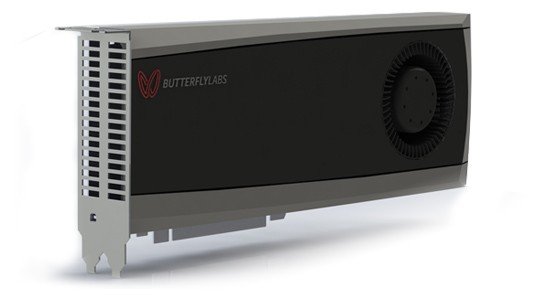
After a lifetime of dealing with centralized currencies, it can take a while to wrap one’s mind around the idea of Bitcoin. Bitcoin seems ethereal, almost like it doesn’t exist, but it’s real enough that people have spent huge sums of money on hardware to mine BTC. There is a wide spectrum of mining rigs out there — from the rickety makeshift ones that seem laughably complex, to the the sleek all-in-one solutions that cost obscene amounts of money.
You can see some examples of these rigs — from the glorious to the foolhardy — in the gallery above.
Mining Bitcoins is as popular as it’s ever been, but that also means it’s gotten quite difficult. For a machine of any sort to generate new Bitcoins, it has to contribute some work to keeping the currency afloat — mining Bitcoins is really the act of adding transaction records to Bitcoin’s publicly accessible ledger, known as the block chain. The block chain is like a decentralized master spreadsheet that confirms when transactions have gone through, essentially preventing anyone from duplicating Bitcoins. A hash is also generated as a proof-of-work, which entitles the miner to the newly generated coins as a reward.
The calculations to maintain the block chain were designed from the start to be computationally difficult, and to get more difficult more miners join. A few years ago it was possible to mine a fair number of bitcoins on a laptop’s spare CPU cycles. Now it requires huge racks of GPUs or custom hardware — people get resourceful when there’s money at stake.
Some folks still create custom rigs with dozens of GPUs all working on generating new blocks. While these are some of the more visually interesting mining setups, the difficulty of generating new blocks is slowly leaving GPUs behind like it did CPUs. Nvidia cards were never particularly good at Bitcoin mining at all — AMD’s architecture uses more shader cores with a simple design and low clock speed. That’s a preferable design for calculating hashes.
The next step up from GPU rigs is FPGA, or field-programmable gate array. These are custom boards that can be configured to calculate many more hashes and use less power than GPUs. However, FPGA rigs use existing hardware and some miners are beginning to switch to custom integrated circuits designed exclusively for Bitcoin mining.
In mining lingo, ASIC stands for application-specific integrated circuit. This is a chipdesigned for the singular purpose of mining cryptocurrency. These devices have only started showing up last year, but they offer by far the best results for the amount of time and power put in. However, they can cost several thousand dollars. That’s quite a steep startup cost.
The future of Bitcoin is still uncertain, but at least it has offered a fascinating peek at mankind’s problem-solving skills. You have to appreciate the ingenuity of a few of those mining rigs.














Source: geek.com
Copying/Pasting full texts is frowned upon by the community.
Some tips to share content and add value:
Repeated copy/paste posts could be considered spam. Spam is discouraged by the community, and may result in action from the cheetah bot.
Creative Commons: If you are posting content under a Creative Commons license, please attribute and link according to the specific license. If you are posting content under CC0 or Public Domain please consider noting that at the end of your post.
If you are actually the original author, please do reply to let us know!
Thank You!
Hi! I am a robot. I just upvoted you! I found similar content that readers might be interested in:
https://www.geek.com/chips/the-15-most-unusual-clever-and-potentially-flammable-bitcoin-mining-rigs-1584714/